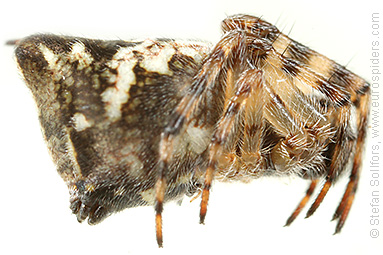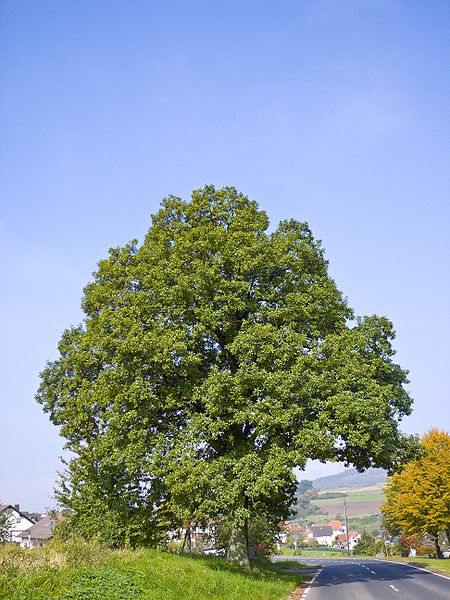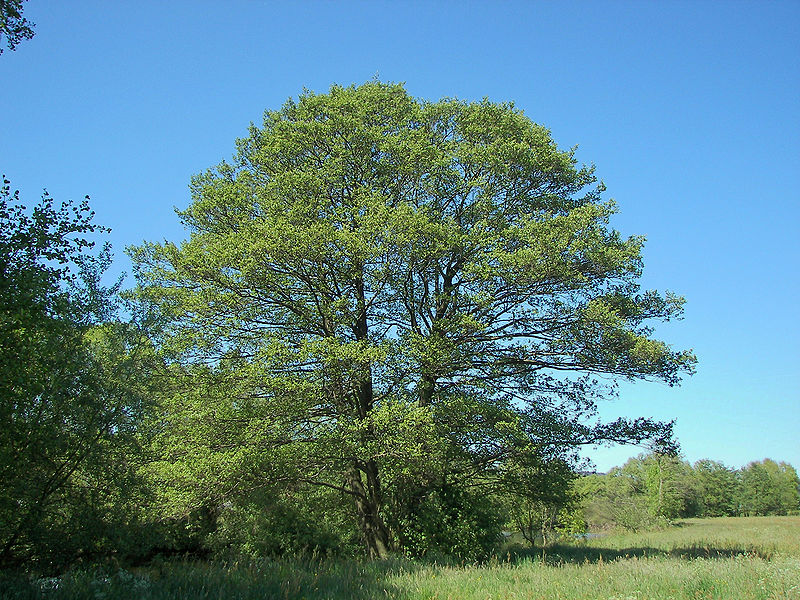Habitat & Geography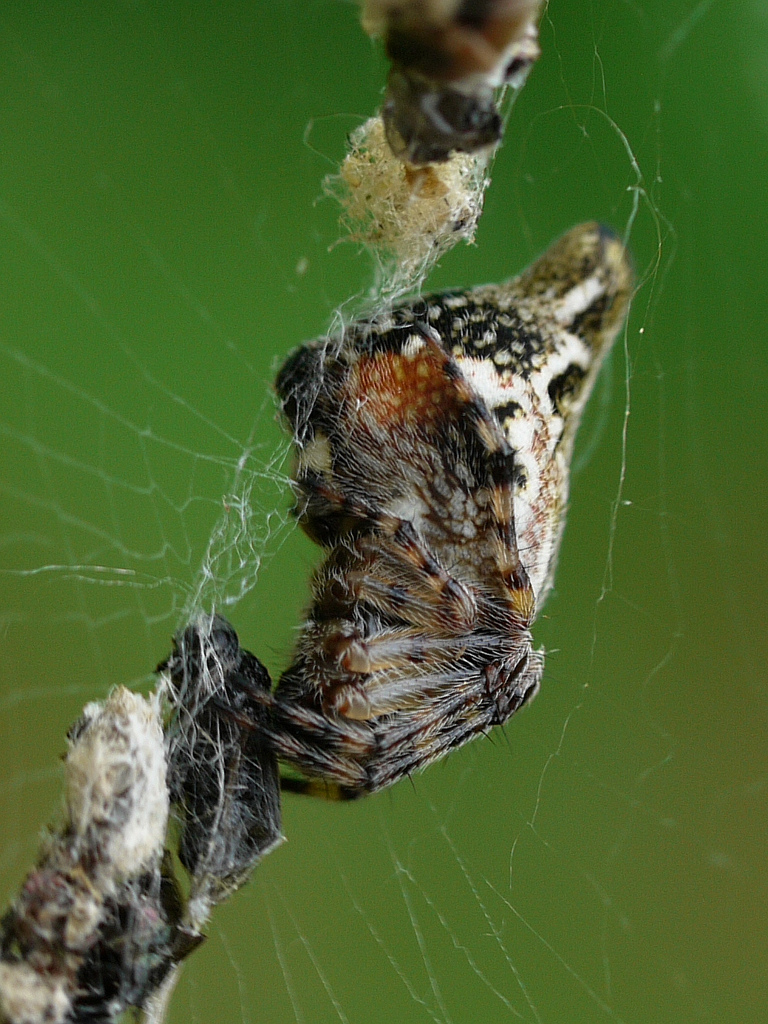
Take a moment to close your eyes and imagine your dream home. Where would it be located? What types of neighbors would you prefer to interact with? What would the climate be like? How about the interior decorating? Well, if you are the Cyclosa conica spider, then your dream home is a quaint 15 to 18 centimeter in diameter vertical orb web gorgeously decorated with stabilimenta that includes egg sacs, prey leftovers, and debris (Tso 1998). To clarify a bit, stabilimenta is just an incredibly fancy term for the web decorations that we see in the Cyclosa conica web. This “décor” is equivalent to you adorning your home with the remains of your dead enemies, yuck! Now that I have your attention, let’s delve deeper into where we can find this peculiar creature and why.
Now you might envision a white sand beach, or a bustling street
in a large city as your ideal location to build that gorgeous home
that I had you illustrate in your mind in the previous paragraph.
For the Cyclosa, however, the edges of the
temperate forest habitats
provide the perfect environment to set up shop (Opell 2001). These
forests range anywhere from Southeastern Alaska, Western Canada,
Northeastern and Northwestern United States, to
Western Europe (Encyclopedia of Life n.d.). A forest edge
habitat is defined as an intersection of two or more different
habitats that is oftentimes a consequence of human actions, such as
logging and
deforestation (Huyett et al. 2004). Although the
creation of these habitats have many harmful impacts on our
environment and the habitats of numerous other organisms, there are
plenty of benefits for the Cyclosa conica based off of this “edge”
location. In additiion to the diverse vegetation of both these
habitats that is
oftentimes present in this single area, there is also a
substantial increase in the amount of plants located in the
understory (Huyett et al. 2004). These two characteristics represent
perks of this particular habitat. This
burst of greenery can be attributed to the increased sunlight that
these plants are exposed to based on their edge location (Huyett et
al. 2004). This buffet of food sources causes many species such as
white-tailed deer, fox, and turkeys to flock to these areas, which
heightens the diversity present here (Huyett et al. 2004). The
Cyclosa conica is also found in many forest edges within the
Angelo Reserve in California. There you can also find a plethora of
diverse organisms within these edge habitats ranging frmo the
Steller's Jay, to the
Northern California Alligator Lizard, and the
Long-tailed Weasel. You may
be wondering how this type of location benefits the Cyclosa spider
specifically, and I am thrilled to explain this in the following
paragraph.
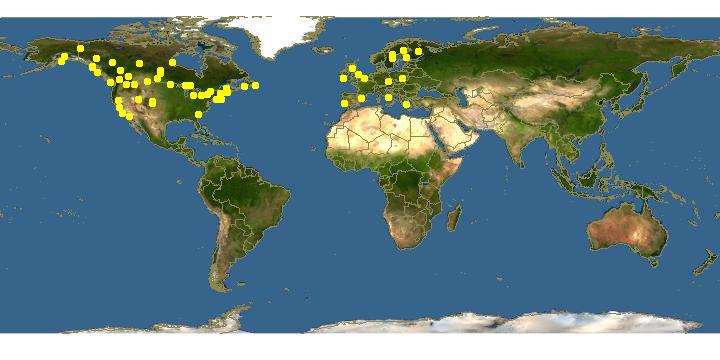
The Cyclosa conica spiders, and other
orb-weaving varieties, are
extremely sensitive to their environment because their livelihood
relies on having a sturdy and trustworthy spot to anchor their web
(Korenko et al. 2011). This is similar to why you might desire to
live in a safe and quiet neighborhood. This provides the spider with
protection and stability in its survival. There are two main types
of locations where the Cyclosa conica tend to reside. Most commonly,
they build their webs in the understories of forests between tree
branches where the lighting is rather low, producing a dim
atmosphere (Tso 1998, Opell 2001). This particular “neighborhood”
provides them with a list of advantages.
.jpg) The perks of this area
include hiding and camouflaging them from predators
(Tso 1998) such as bats and birds (Kervyn et al. 2012), and giving
them the upper hand when capturing prey due to their concealment
(Tso 1998). As mentioned above, the increased sunlight and foliage
present in the understory of forest edges explains the attraction of
Cyclosa to those areas. The other “neighborhood” that the
Cyclosa and other orb-weaving spiders tend to inhabit is the tree crown
(Korenko et al. 2011). This particular area is consisted of all the
branches, leaves, etc. that are located above ground, also known as
the top of the tree
(Merriam-Webster Dictionary 2014). The tree crown also has many
positive characteristics as a home also. Within the crown there is a
plethora of different mini habitats, or microhabitats, that include
their own unique food sources and climates for the spider to choose
from (Korenko et al. 2011). Also, the possibilities of locations to
attach webs and hide from predation threats increase the
attractiveness of this particular location to spiders in general
(Korenko et al. 2011). The type of tree crowns that Stanislav
Korenko found orb-weaving spiders (Cyclosa) to create their webs on most
often were deciduous species such as Alnus glutinosa (a type of
birch tree) (Defenders of Wildlife n.d.)and Quercus petraea (a type of oak tree) (2011) that are
prevalent in temperate forests (University of California Museum of
Paleontology n.d.). Another organism
within the Angelo Reserve that favors habitats near oak trees is the
Columbian Blacktailed Deer,what a popular place! These are all
reasons why the edges of temperate forests throughout the world make
a pristine orb-weaving spider’s paradise.
The perks of this area
include hiding and camouflaging them from predators
(Tso 1998) such as bats and birds (Kervyn et al. 2012), and giving
them the upper hand when capturing prey due to their concealment
(Tso 1998). As mentioned above, the increased sunlight and foliage
present in the understory of forest edges explains the attraction of
Cyclosa to those areas. The other “neighborhood” that the
Cyclosa and other orb-weaving spiders tend to inhabit is the tree crown
(Korenko et al. 2011). This particular area is consisted of all the
branches, leaves, etc. that are located above ground, also known as
the top of the tree
(Merriam-Webster Dictionary 2014). The tree crown also has many
positive characteristics as a home also. Within the crown there is a
plethora of different mini habitats, or microhabitats, that include
their own unique food sources and climates for the spider to choose
from (Korenko et al. 2011). Also, the possibilities of locations to
attach webs and hide from predation threats increase the
attractiveness of this particular location to spiders in general
(Korenko et al. 2011). The type of tree crowns that Stanislav
Korenko found orb-weaving spiders (Cyclosa) to create their webs on most
often were deciduous species such as Alnus glutinosa (a type of
birch tree) (Defenders of Wildlife n.d.)and Quercus petraea (a type of oak tree) (2011) that are
prevalent in temperate forests (University of California Museum of
Paleontology n.d.). Another organism
within the Angelo Reserve that favors habitats near oak trees is the
Columbian Blacktailed Deer,what a popular place! These are all
reasons why the edges of temperate forests throughout the world make
a pristine orb-weaving spider’s paradise.
<< Classification
References
Form and Function>>
